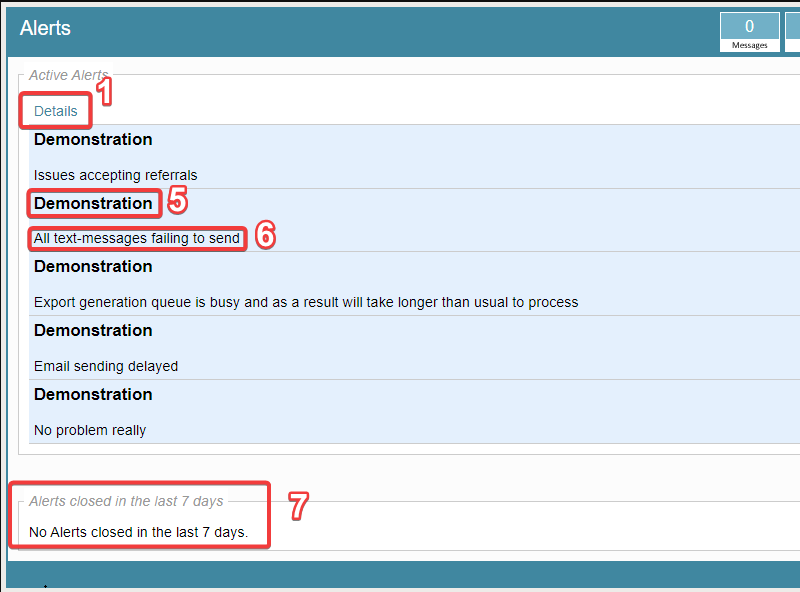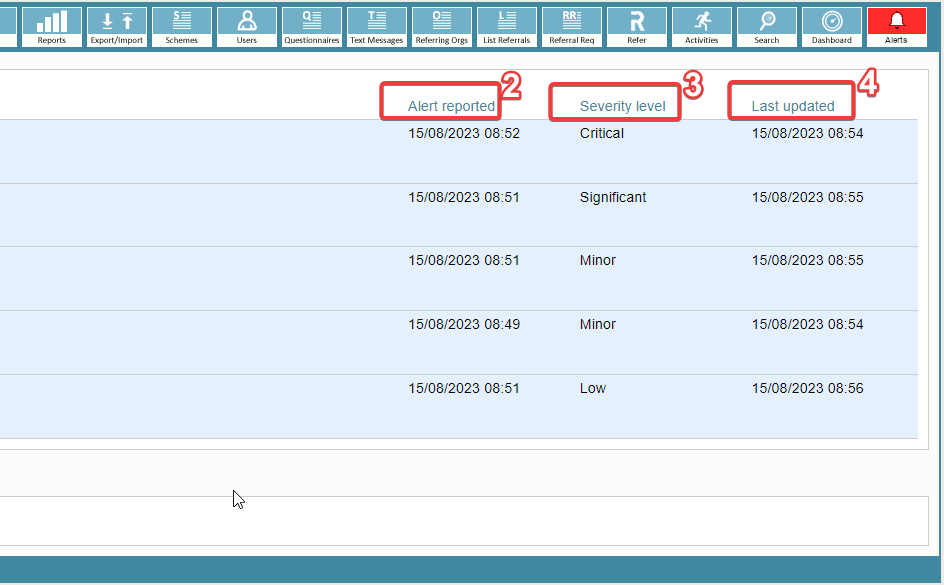How Alerts Work
Alerts allow us to immediately communicate any information or advisories to our active users, keeping everyone in the loop.
Why does it matter?
The alert button has come about as a replacement to our status page, which previously was where we announced all our scheduled maintenance and any on-going issues.
The introduction of the alert button is a result of our decision to replace the software status page. We have noticed a low percentage of active users signing up for the status page, so we have decided to retire it. Rest assured; subscribers will be notified when this takes place. Instead, we have introduced Alerts within the system. These alerts will notify all logged-in users about scheduled maintenance and other important information that we want to convey to our end users.
How it works
The new icon will be visible on all users' dashboards, as well as on referral records and in the search area. This means that it will always be in sight, even if you're away from the dashboard icons, whenever a new alert appears.

Activity Administrators, Scheme Administrators & Super-Scheme Administrators, will all be able to see Alerts with have access to the same information in this area.
Just like the Messages button, the Alerts button will change its colour to indicate the availability of a new alert. Positioned at the far-right of the dashboard, it will be easily noticeable when a new alert is published.

The yellow colour of the icon will indicate there is a new, informational Alert, ready to be viewed by the user.
These alerts will primarily consist of notifications regarding scheduled maintenance or any other updates that do not have a direct impact on the functionality of the platform.

If the Alert icon turns red, it means there is a potential issue that may affect your ability to use the platform. You can find detailed information about the issue in the alerts area, which will help you understand its impact.
Understanding the Alerts page

The details section [1] shows under it both the header / title [5] and the description [6] of the alert that has been published.
Alerts appear in this upper section when they are active, resolved alerts will then be in the lower section [7] removed after 7 days since they have been resolved.
On the right-hand side, you can see when the alert was reported [2], when the alert was last updated (had new notes added, status changed, etc.) [4]
Finally, you can see what level of severity this alert is [3], where the yellow icon will always report that it is informational, a red icon could be Low, Minor, Significant or Critical.
